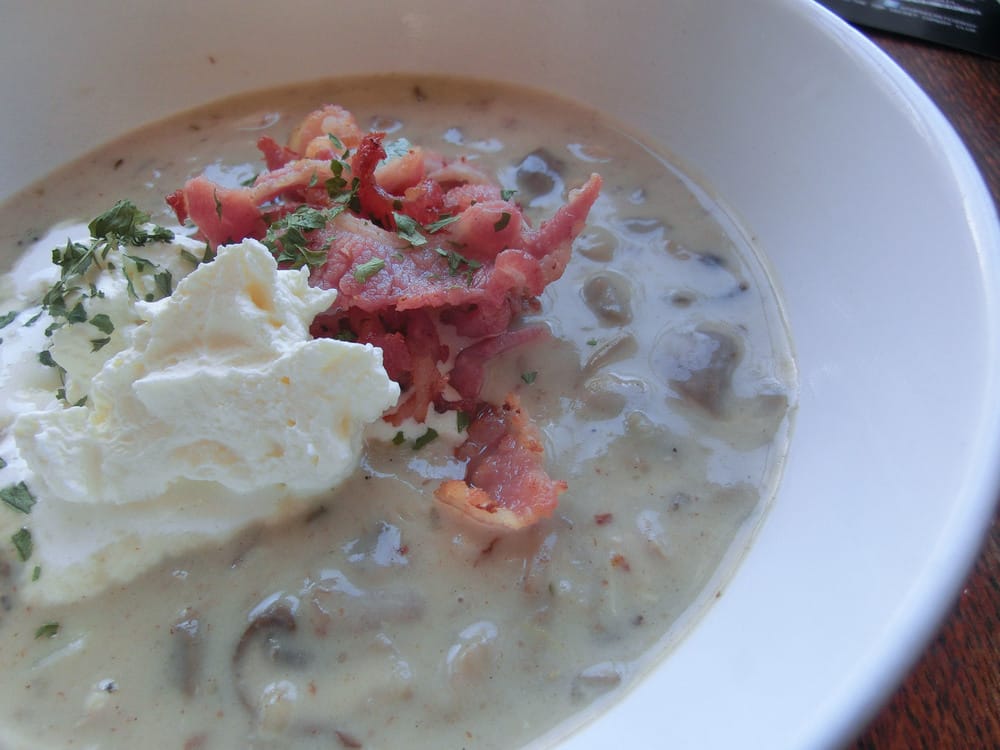What’s In My Lunchbox? #01
Carol Ann Cheah ponders “ladies who (liquid) lunch” this winter

Ah, winter. The season when just about everything seems to drop: temperatures, number of daylight hours, moods, hemlines (well, depending.) It’s around this time of the year when us Food Editors face a dilemma when packing our lunches – we need more warm/hot sustenance, so our fallback of sarnies and salads just won’t do, even with a cuppa after. At the same time though, QTR/FiveSixEight/Eastside Bar meals can add up, and we’re really not about to give up the packed lunch habit yet.
Enter soup, our favourite solution (ha!) to the issue at hand. It’s an everyman’s meal that’s more than your “favourite freshers’ flu remedy”, or the typical posh-restaurant starter.
There’s a reason we love them so much. They’re not just fun to eat; they’re a great way to use up leftovers, and keep well in the freezer so can be made well in advance (lazy weekend cooking, anyone?) The most basic concoctions won’t take you hours to slave over or require some fancy French cooking technique; but once you’ve built up your skills and confidence, soup recipes then have plenty of wiggle room for you to start jazzing them up more. The end product can be as cheap or expensive as you want: it depends on your ingredients. If your cooking process does NOT include the directions “pull back tin lid” or “microwave on HIGH for ** minutes”, all the better.
“Soup” is such an umbrella term: it encompasses every flavour and texture imaginable. Some days we enjoy rich, decadent “cream of” concoctions; other days, clearer Asian broths (miso and the like) are more up our alley. Still other days we’re privy to getting our handblenders out and slurping our pureed results after.
Of course, we’re all analytical people here at Imperial; so what’s the use of this feature if we don’t give you a detailed breakdown of this dish’s anatomy to pore over?
Lock...
As said before, the ingredient combinations are endless when it comes to soup. Stuff like chicken, mushroom, tomato, pumpkin and pea etc are the usual fail-safe staples, so you can’t go wrong with those flavours if you’re just starting out. It’s then up to you to mix in whatever takes your fancy – we once experimented with a chicken, seafood and chorizo concoction, which we thought only existed in paella. How wrong we were.
Soup’s commonly consumed with a side of crusty bread to fill you up better; but that isn’t always needed. To make soups heartier, the options are yet again limitless. Mulligatawny uses rice as its starch of choice, others use dried or tinned beans (do boil the dried beans in water first to soften though.) A very easy option (and one you’ve probably come across as a kid in the form of alphabet soup) is pasta; chucking in boiled pasta bits in a soup is a good way to make them go further.
For thickening, it again depends what your ingredients are. If you’ve got potatoes, peas, pumpkin or the like, chances are you’ll probably be doing the thickening job by pureeing with a handblender. “Cream of” soups tend to have flour sprinkled on the ingredients and then stirred in to make a roux just before the liquid is added to it. If you do that, stir it as thoroughly as you can; but don’t worry about the odd lump – it’ll go when the liquid is added in.
Stock...
Whatever way you look at it, stock is pretty much at the heart of soups. Asians even have the term “master stock” for their broths; in their soups, if you fudge the stock up it’s bust for the finished soup – there’s nothing to mask it, so there’s nowhere for the stock to “hide” (unlike some soups that puree the ingredients after.) Stock matters because there’s no use having flavourful ingredients in a “broth” of plain water; that would be akin to leaving your veggies in the water that you used to boil them and drinking said water. Tasteless – why would you?
Stock-making tends to vary from laborious methods that produce rich and complex broths, to simple “bung-in-and-forget” methods as well. We appreciate that what you prefer will depend on how much time you have/are willing to spare – we’re into instant gratification as well. Our method of choice involves bunging a chicken carcass/chicken bones (from a roast chicken, or raw direct from your butcher for cheap) in a pot with some chopped onion and garlic cloves, plus some chopped leftover veg (leek/carrot/celery works well) with just enough water to cover. Bring to the boil, skim impurities, lower heat, leave for half an hour and adjust seasoning – then strain and use immediately, or fridge/freeze portions. If you can’t get hold of a carcass, making from fresh with wing tips keeps the cost down but maintains flavour.
Unlike baking, soup isn’t an exact science – it’s very much “handful of this/pinch of that” cooking. If it’s too thick, add stock/water/milk; if it’s lacking in flavour, season a bit. Be careful though, go slow when you do this – you can always add, but ye cannae take away!
If you really must use store-bought stock cubes/bouillon, check the amount of salt that’s already there. Chances are you probably won’t need to add extra salt.
...and two smoking barels
There are two important...er, vessels you’ll be needing in the process, amongst others. The first is obviously the (stock)pot, where all the magic happens. Make sure it’s nice and big enough to hold your ingredients, with a bit more room at the top – lest you run the risk of things boiling over and losing some of your end product (be it stock or the actual soup.) If you’re pressed for time, a pressure cooker works well in getting your meat and veg soft in half the time (or less) usually required by traditional on-the-stove boiling – just make sure you read the instructions.
The other important vessel is what you’ll be transporting your soup in for that packed lunch. It needs to seal properly, unless you’re particularly keen on consuming remnants of your lunch from your lovely lecture printouts or the inside of your bag. We like our trusty Thermos-es – for the more liquid ones you’ll be fine with standard Thermos flasks (same ones meant for hot water/coffee/etc); but for the heartier ones that actually need a spoon, you’ll definitely need those food jars with a wider mouth to comfortably dip your spoon in. These can cost anything from a fiver to almost twenty quid, depending on the retailer.
If you’re really cheap, wide-mouth Mason jars that are used for jam/honey will work if you’re using it to store frozen soup portions, and have access to a microwave (just leave room for expansion during freezing.) Take out the frozen soup jars in the morning, bag them, and then reheat until piping hot during lunch.
Cream of mushroom soup with crispy bacon bits recipe
Ingredients:
4 rashers bacon, rind off and chopped into small bits (both streaky and back bacon are fine) -– optional garnish
1 onion, finely chopped
2-4 cloves garlic, finely chopped (depends how much you like it)
375g mushrooms, finely chopped (use any kind of fresh mushrooms you want, or even a mix. I made this with a mixof chestnut and white, portobellos would work)
2-3 tablespoons of plain flour
600ml stock (chicken/vegetable)
100-200ml milk (adjust according to taste/consistency)
150ml double cream
Oregano and parsley (dried is okay)
Oil or butter for frying
Bacon garnish: Heat up a small amount of oil in a frying pan, then bung in the bacon bits and fry until crisp. Remove and set aside on paper towels to drain.
Saute the onion, garlic and mushrooms in oil/butter until fragrant, soft and just starting to colour. Sprinkle the flour on and stir until evenly mixed, then add stock and milk. Bring to the boil, then let simmer for up to 30 minutes (you’ll see it thicken up nicely.) Taste and adjust seasoning – add some oregano at this stage.
Add in half of the cream (75ml) and stir, then pour into bowls. Whip the rest of the cream until stiff peaks form. Garnish with the bacon bits, a spoonful of the whipped cream, and a sprinkling of chopped parsley. Omit the extra whipped cream if you’re packing this for lunch.
Serve with a slice of crusty buttered bread – feeds 4 as a starter, or 2 as a main meal.








